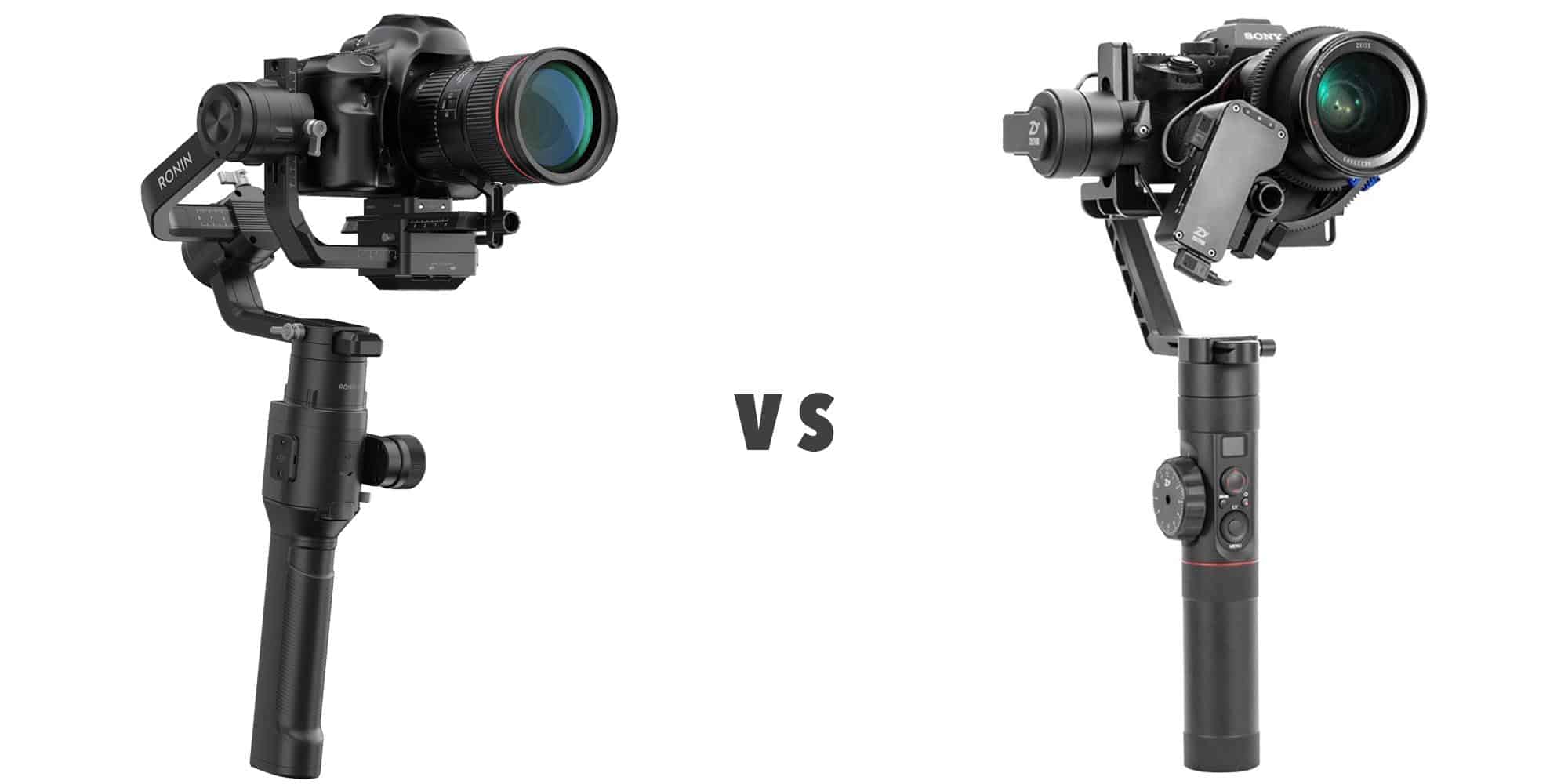DJI and Zhiyun are the two titans when it comes to the gimbal market for DSLR and mirrorless cameras. The DJI Ronin S and Zhiyun Crane 2 are two of the most popular single-handed gimbals for mirrorless cameras and smaller-bodied DSLRs.
The Ronin-S was DJI’s answer to the huge success of the Zhiyun Crane 2. Coming out around a year after the Crane 2, it finally meant DJI had something for those who were looking for a smaller and more affordable gimbal than the Ronin-M.
After recently renting out the Ronin-S for two days, I’ve had the chance to test the two gimbals side by side.
Stabilization and Tracking Performance
After fairly extensive testing of the two gimbals along with my Nikon D850, the two gimbals were pretty much even in stabilization performance. On certain playbacks the Ronin-S footage looked smoother, and in others the Crane 2 looked better. In any case, the difference wasn’t big enough for the naked eye to discern.
However, AI tracking performance was noticeably more snappy on the Ronin-S. The Crane 2 wasn’t bad by any means, but when filming my dog play fetch there were times where the Crane 2 would take time to catch up and end up with the dog missing from a few frames.
Winner: DJI Ronin-S
Maximum Payload
The Zhiyun Crane 2 can carry a payload of up to ~7lbs (3200g). The Ronin-S can support up to ~8lbs (3600g).
Both gimbals should be fine for most DSLR setups, but the Ronin-S leaves more breathing room for those that employ heavier cine lenses, shotgun mics, gimbal monitors and various other accessories.
Winner: DJI Ronin-S
Build Quality And Ergonomics
Both the Crane 2 and Ronin-S are built from durable metal, but the heavier Ronin-S definitely feels more robust in the hands. In saying that, there haven’t been any widespread build quality issues for the Crane 2 or Ronin-S, so it’s safe to say that it’s unlikely either gimbal will fall apart while filming.
Both gimbals have good ergonomics but the Ronin-S has a slightly more ergonomic grip. The Ronin-S has an ergonomically designed grip whereas the Crane 2 just has a metal cylinder as its grip, which can make it difficult to determine whether you are holding it completely straight since it feels the same all around.
Winner: DJI Ronin-S
Weight and Portability
Weight and portability are two crucial factors for those that frequently hit the road and film for longer periods of time.
The Ronin-S weighs 4.1 lbs (1.86 kg) whereas the Crane 2 weighs 2.76 lbs (1.25 kg). The difference isn’t huge and the weight of the gimbal itself only accounts for a small proportion of the entire setup’s weight. However, over long periods of time the weight you save with the Crane 2 will definitely reduce fatigue.
Although the Crane 2 weighs less, it doesn’t pack down quite as well as the Ronin-S. DJI have made it possible to unscrew the base/grip from the gimbal head, making it easier to fit into smaller compartments.
Winner: Tie
Camera Compatibility
Although both gimbals will be able to stabilize footage for any camera that fits properly, proper compatibility ensures that the gimbal can properly control various camera features.
The Ronin-S originally lacked compatibility for Canon DSLRs, but with the latest firmware full interfacing compatibility has been added. Meanwhile, Zhiyun added compatibility with the Nikon Z6 and Z7 in their latest firmware updated.
Winner: Tie
Accessories
There are a plethora of accessories for either gimbal. DJI and Zhiyun are the biggest names in DSLR/mirrorless gimbals and have a lot of first-party and third-party accessories.
A follow focus system which physically pulls the focus ring on the barrel of a lens is an accessory often used by those filming video. Upon its release the Ronin-S lacked a follow focus system but now DJI have released their own. The Zhiyun Crane 2 has the Servo Follow Focus accessory. I have personally not used either and have gotten satisfactory results with autofocus, but more technical videographers will certainly want to look deeper into the gimbals’ respective follow focus system options.
Winner: Tie
Battery Life
The Crane 2 makes use of three removable batteries that together give it an 18 hour battery life. Meanwhile, the Ronin-S features a built-in battery which can last for up to 12 hours.
Removable batteries are superior in that they can be recharged separately and provide the option for buying a secondary set of backup batteries. The built in battery of the Ronin-S does however mean charging is without the need of taking out the batteries and putting them back in each time you charge.
Winner: Zhiyun Crane 2
Price
At the time of writing, the Crane 2 is the cheaper of the two. You can get the gimbal with the servo follow focus unit for just shy of $500.
Meanwhile, the cheapest option for the Ronin-S is the No products found. which includes a plastic (instead of metal) tripod and doesn’t bundle a follow focus unit. The No products found. costs more.
Winner: Zhiyun Crane 2
Verdict
After spending time with both gimbals I can say I preferred the DJI Ronin-S overall. Its ergonomics were superior and I would have more trust in its reliability given the superior build quality. The superior tracking performance also made it more suitable for capturing fast paced action.
Having said that, the Crane 2 is an incredibly good DSLR and Mirrorless camera gimbal that costs less and has a few advantages of its own. If you come across a second-hand one in good condition or find it heavily discounted, it may be too good to pass up on.
Having trouble figuring out which gimbal to get for your DSLR or mirrorless camera? Check out the list of my favorite gimbals for DSLR.
